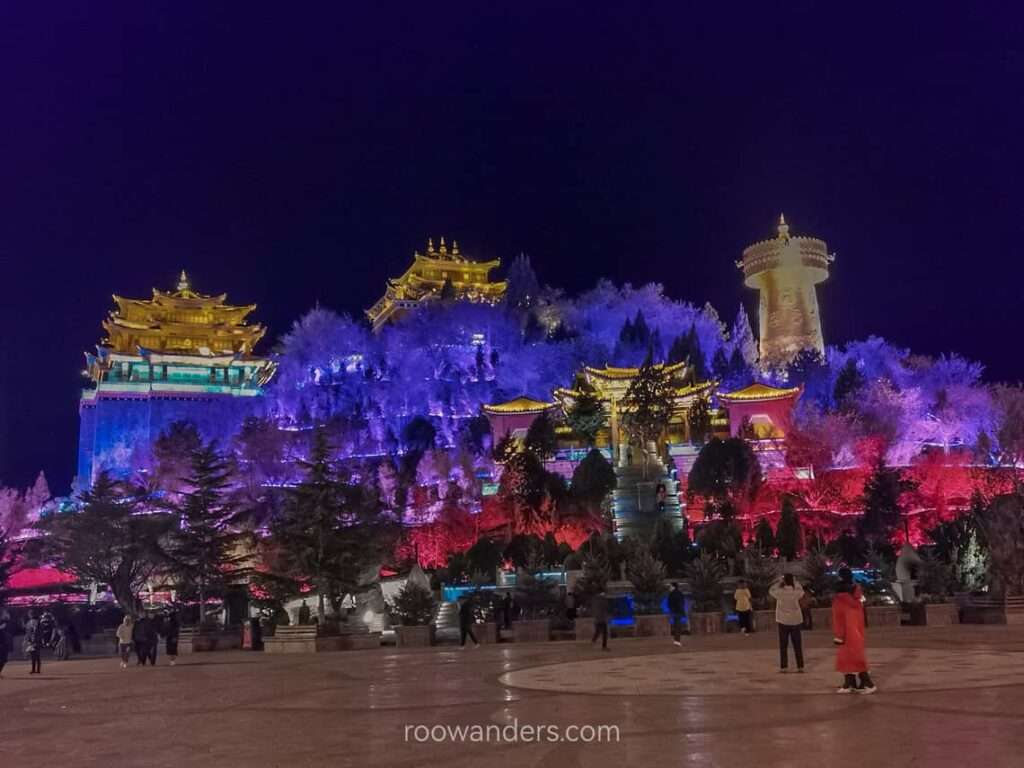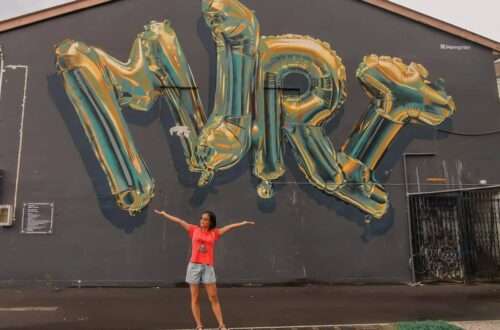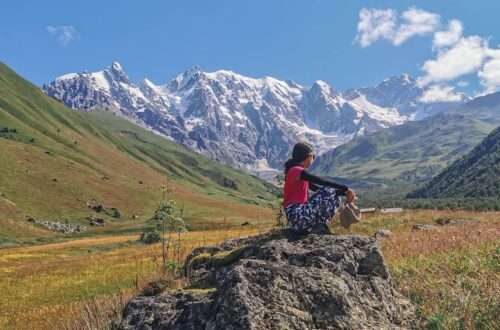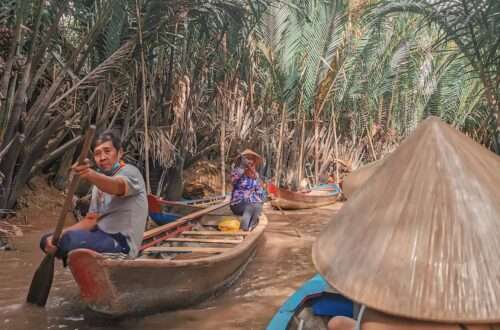
Shangri La 香格里拉: Top 10 Activities
According to the Cambridge Dictionary, Shangri La 香格里拉 is:
‘An imaginary, beautiful place, often far away, where everything is pleasant and you can get everything you want.’
Unlike what the book Lost Horizon depicts – an earthly paradise with immortal inhabitants – Shangri La, in reality, is a clean and tidy modern city with friendly people. Shangri La, 香格里拉 (Xiang Ge Li La), originates from a mythical city, ‘Shambhala 香巴拉 (Xiang Ba La)’, in Tibetan Buddhism.
For my first trip to Yunnan province, my friend and I spent three days exploring this beautiful city. The rest of our two-week vacation was at the fairytale-like Yubeng Village, Haba Snow Mountain, and other minor day trips out of Shangri La.
If you were to join a comprehensive week-long Yunnan tour, most groups would plan an average of one day for Shangri La. While this is sufficient to browse through the major attractions, it is not enough to fully soak in everything the city has to offer.
I visited Shangri La in April 2019. This post contains affiliate links that cost nothing to you but support the blog. It may also be updated periodically.
Dukezhong Old Town (独克宗古城)
Most of the attractions in Shangri La are within Dukezhong Old Town.
Dukezhong, estimated to be around 1300 years old, has survived wars and disasters, with the most recent being a fire in 2014. The old town has small cobbled streets and short buildings with beautifully crafted wooden exteriors – making it a charming backdrop for modelling or wedding shoots.

Turtle Hill/ Guishan Park (龟山公园)
Located at the heart of Dukezhong’s old town are a hill with a temple and a giant prayer wheel.
Big Buddha Temple (大佛寺) has a massive five-level golden prayer wheel which – according to myths – if spun three times would bless the person who spun it from sickness and misfortune for the rest of his life. However, that person would have to call in a handful more friends as the 16-tonne wheel needs at least four strong men to turn it.

Turtle Hill is also a good vantage point for photos of the old town and faraway mountains. The temple and trees surrounding the hill lit up at night.
Dedicate at least 30 mins to visiting the hill. Admission is free.
Moonlight Square (月光广场)
Beneath the hill lies a square with two free museums.
One museum tells the history, archaeological finds and Tibetan culture of old Shangri La.
The other museum – the Memorial Hall of the Red Army’s Long March – was not open when we were there. There’s a working temple behind the memorial hall.
You could spend an hour or two in the first museum.

Baiji Temple (百鸡寺)
Baiji Temple is a distance away from Dukezhong and requires a bit more walking. Venturing further away from the old town meant you would encounter fewer crowds.
The route to Baiji Temple – loosely translated to a hundred chicken temple – is not easily identifiable. Having apps like Maps.me and paying attention to obscure road signs helps. We started walking from Sifang Street 四方街, through and out of the neighbourhood. The entire journey was mostly on steps and took us 30 mins.
What awaited us at the top was serenity and colourful fluttering prayer flags. The temple was not impressive, but the view from the climb was worth the effort. It was even better than at Turtle Hill!
Despite being called a hundred chickens temple, I spotted only a dozen chooks.

Sifang Street (四方街)
This is an empty plaza situated between shophouses selling souvenirs by the day.
When night falls around 7 – 8.30 PM, locals meet at the plaza to dance to the music coming from a bar. They dance in winter too.
We saw smartly dressed elderly dancing with children. Our hosts in the guesthouse and boss from one of the hotpot restaurants we patronise went out to dance too.

Songzanlin Temple (松赞林寺)
Catch the public bus from Dukezhong (2 RMB) and ride till the end of the line to Songzanlin Temple. The tickets cost 90 RMB each with a complimentary ride and guide – in Chinese – around the complex.
There are three main complexes in Songzanlin, and it was quite an experience going through each of them and listening to what the guides had to say about the artefacts within.
Dedicate at least half a day for this trip. The view from the temple extends beyond Shangri La to the mountains.

Tibetan Traditional Dinner and Dance
The dinner and dance are the closest I could get to Tibetan culture for now, until the day I set foot in Tibet.
For our Tibetan dinner, which was held in a traditional Tibetan house (土司), we had lots of meaty dishes over hotpot. The dishes kept coming and the singers and dancers kept performing so I was lost over what I was actually eating. Anyhow, to all my alcoholics out there, this is your chance to have a free flow of highland barley alcohol (青稞酒). But do note the very high alcohol content! For those who are against highly alcoholic drinks, there is yak butter tea (酥油茶) too.

The entire performance lasted over 4 hours from 6 till late. Two highlights stuck in my mind’s eye, despite the plethora of food and activities – a huge platter of spiced yak meat, and a bonfire dance outside the compound. The chefs split the meat once everyone has their fill of photos.

I’m not sure about the name or exact venue of this tour, but I’m sure you will find it by contacting your hotel or the locals. We learnt and booked the experience from our favourite hostel in Shangri La. Dinner was 160 RMB.
Other Places of Interest Beyond Shangri La
Balagezong Shangri-La Grand Canyon (巴拉格宗大峡谷)
Travelling down from Shangri La to Balagezong was an intimidating experience. The tourist bus had to cruise through a bendy mountainous route to reach this once-secluded village. The trip took us two hours. Tickets, including the bus fare from Shangri La and the guided tour within the canyon, cost 220 RMB per person. We booked the tour through our accommodation. It’ll cost you 170 RMB for the guided tour, sans transport from Shangri La.
Visiting Balagezong from Shangri La is a full-day trip from 9 am till the evening.
Some of the places we visited on this trip include the thousand-year-old Bodhi tree (千年菩提树), Bala Village (巴拉村), a temple that doubles as a museum (巴拉达拥佛塔以及藏文化博览中心), Echo Valley (回音壁) and the grand canyon (香格里拉大峡谷).
Some travellers visited Shambala Buddha Tower (香巴拉佛塔), located at 4050 m, at an additional cost. The rest of the attractions are between 2050 m to 2700 m.

Napa Lake Grasslands (纳帕海依拉草原)
The best time to visit the grasslands is between June and November, when the grass is lush, and the animals are out grazing.
September is the best month for bird watchers.
While we were there in April, the grasslands were a mix of brown and yellow.
According to MaFengWo 马蜂窝, a Chinese travel app, you need to dedicate half a day to the grasslands. Set aside 40 RMB for the entrance fee. The best way to get there is by renting a scooter, according to our host and the uncle who served us yak hotpot.

Potatso National Park (普达措国家公园)
Potatso is a national park renowned for its lakes: Shudu Lake (属都湖) and Bita Lake (碧塔海). And also a Tibetan culture village (文化村).
Again, as with the Napa Lake Grasslands, April was not a good time for us to visit. Our host recommended Balagezong, and that was where we went.
Potatso National Park is huge with places to hike – dedicate at least an entire day here to cover all the scenic areas. It costs 138 RMB to enter the park, which includes a bus ride.
Getting to Napa Lake Grasslands is easy. Hop onto one of the morning buses from Shangri-La to Potatso at 8 AM, 8.30 AM and 9 AM from the main bus station. Return buses leave Potatso for Shangri-La at 2 PM, 2.30 PM, 3 PM and 4.30 PM. The journey takes 30 mins and costs 15 RMB each.

Yubeng Village (雨崩村)
Any hikers in Shangri La must add Yubeng to their plan.
Yubeng Village was gorgeous when we were there. You could easily spend five days in the valley.

Getting there might be a bit tricky via public transport as we had to travel by bus to Deqin, carpool to Feilaisi, and then another carpool to Xidang, which is the start of the trek. To save you from all that trouble, there’s a tour here that cuts the hassle.
Haba Snow Mountain (哈巴雪山)
Haba Snow Mountain is one of the easiest snow mountains to summit in China. You can do it within two days! This mountain sits between Shangri-La and Lijiang.

We wanted to conquer our first snow mountain (5,396 m) and devoted almost half the trip to it. More on this in a separate post.
Ending
And that is all from me for Shangri-La.
If you are not interested in hiking or outdoorsy activities, then spending more than a week around the area will definitely bore you. Mix Shangri La with other cities around Yunnan, like Lijiang, Kunming and Dali.
According to the information I have gathered from various sources, Shangri La is the least touristy city in Yunnan but the one with the most Tibetan vibes. Enjoy your time in Shangri La!







